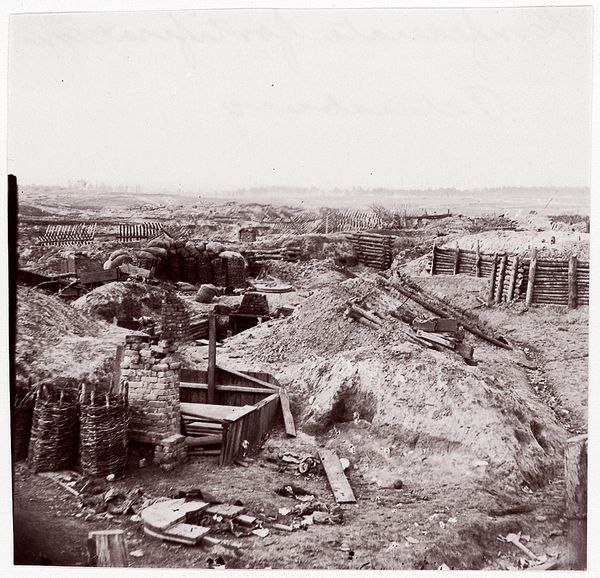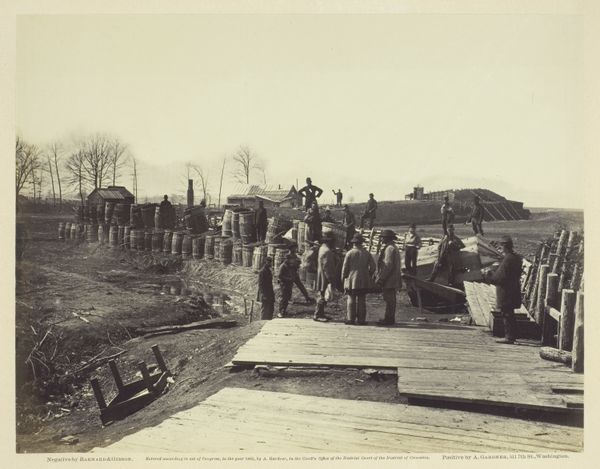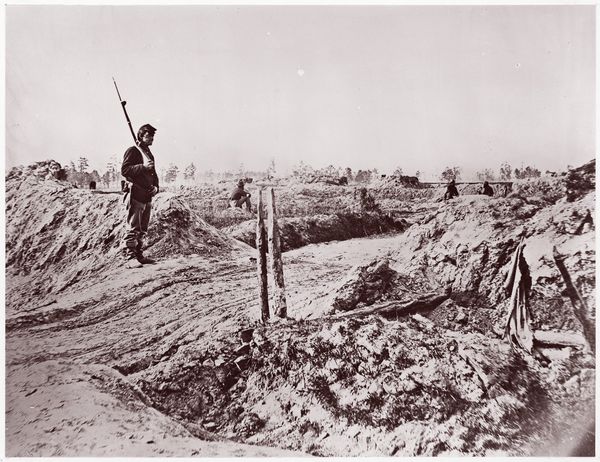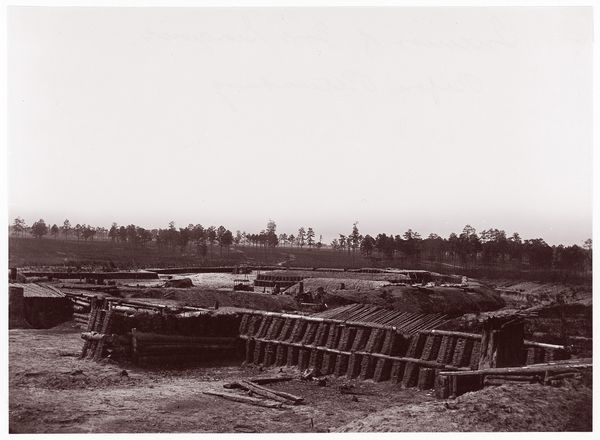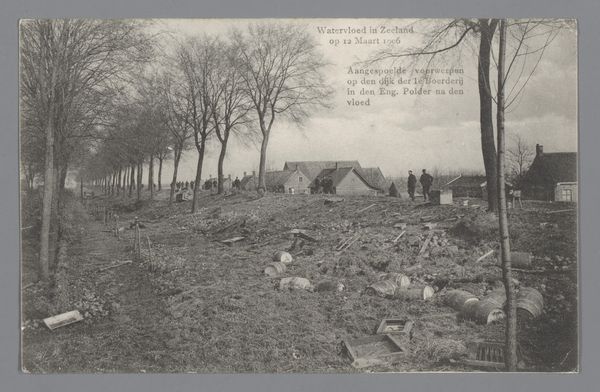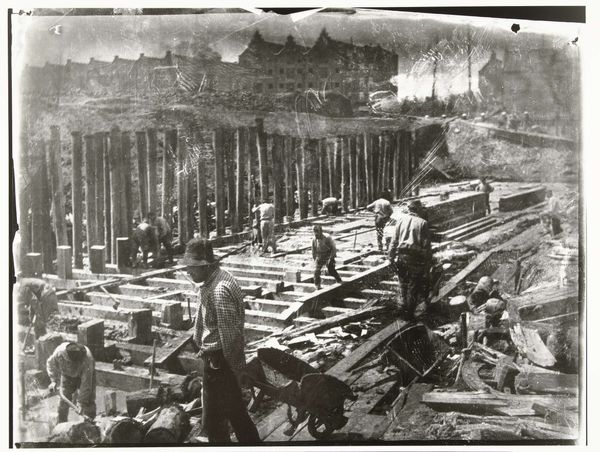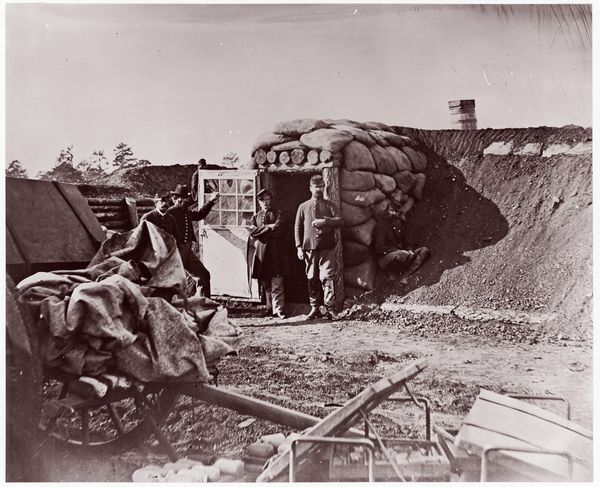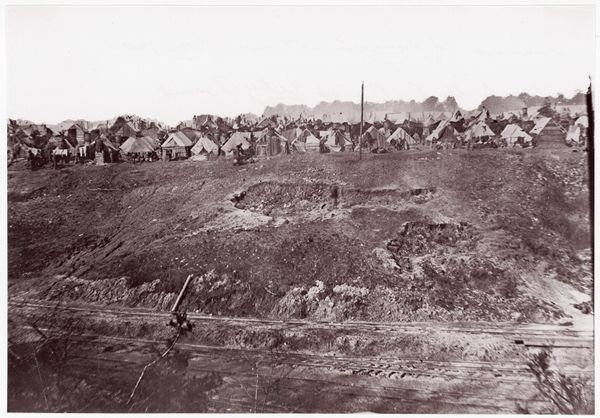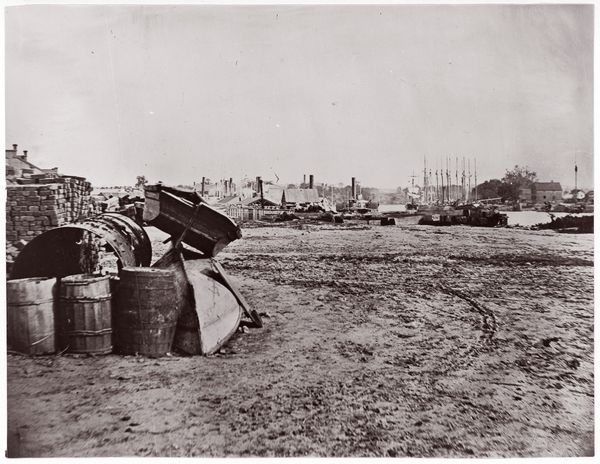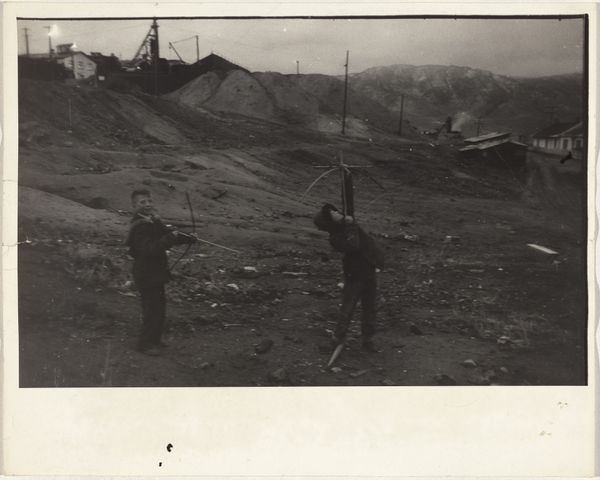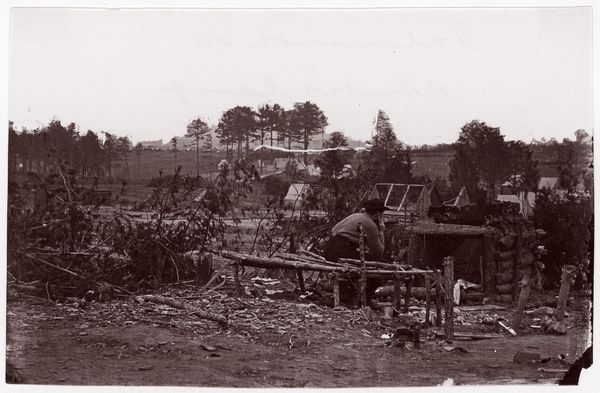
print, contact-print, photography, gelatin-silver-print
#
black and white photography
# print
#
war
#
landscape
#
outdoor photograph
#
contact-print
#
nature
#
photography
#
soldier
#
gelatin-silver-print
#
monochrome photography
#
men
#
realism
#
monochrome
Copyright: Public Domain
Curator: This gelatin silver print, titled *Dutch Gap Canal*, was created by Egbert Guy Fowx in 1865, and it's currently held at the Metropolitan Museum of Art. What strikes you most about it? Editor: The sheer bleakness, really. It's a scene dominated by earth and labor. The absence of vibrant color reinforces a sense of stark reality, doesn’t it? Almost oppressive. Curator: Indeed. It is crucial to remember that photographs from the American Civil War—like this one—offer an unflinching view of the war’s impact on both landscape and the lives, including enslaved people forced into labor, of those who became soldiers. This canal, located in Virginia, was intended to shorten the Union's passage on the James River. Editor: It's compelling to see this strategic project framed as almost biblical toil. Look at the men, the minimal equipment, set against this monumental landscape being reshaped, forcibly. It begs the question of whose freedom this project actually served. Curator: The photograph, beyond documenting an engineering feat, implicates itself in the power dynamics of the war. The canal itself became a stage upon which emancipation was negotiated and contested through the very labor it demanded. Editor: Do you think this image was intended to highlight the innovation or perhaps to tacitly comment on the human cost? I wonder, what was the prevailing attitude towards African Americans within photographic circles at this time, and how does that inform the context of such an image being produced and displayed? Curator: That's a sharp question. Photographic practices in the Civil War era were rarely politically neutral; depictions—including of labor—became intertwined with prevailing racial ideologies. Whether documenting progress or subtly highlighting exploitation, the choices behind creating and disseminating the image cemented existing narratives of power, which certainly extended to art world audiences. Editor: A powerful testament, really, to the layers within even a seemingly straightforward documentation. It underscores how vital the roles of artistic creation and historical interpretation really are. Thank you for sharing your expertise. Curator: My pleasure. I find it rewarding to view art through such lenses of intersecting histories.
Comments
No comments
Be the first to comment and join the conversation on the ultimate creative platform.

